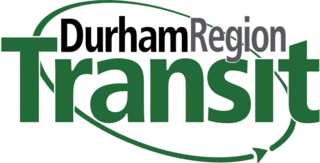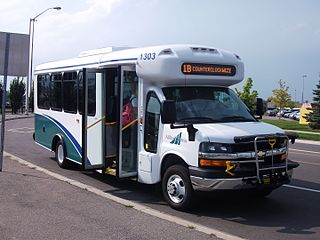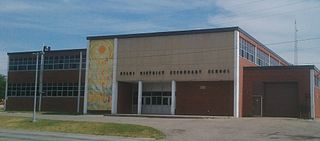
Simcoe is an unincorporated community and former town in Southwestern Ontario, Canada near Lake Erie. It is the county seat and largest community of Norfolk County. Simcoe is at the junction of Highway 3, at Highway 24, due south of Brantford, and accessible to Hamilton by nearby Highway 6. This largest of the communities in Norfolk County had a population of 16,121 at the time of the 2021 Census.

The Maryland Transit Administration (MTA) is a state-operated mass transit administration in Maryland, and is part of the Maryland Department of Transportation. The MTA operates a comprehensive transit system throughout the Washington-Baltimore metropolitan area. There are 80 bus lines serving the Baltimore Metropolitan Area, along with rail services that include the Light Rail, Metro Subway, and MARC Train. In 2022, the system had a ridership of 52,922,000, or about 219,300 per weekday as of the first quarter of 2023.

Norfolk County is a rural single-tier municipality on the north shore of Lake Erie in Southwestern Ontario, Canada with a 2016 population of 67,490. Despite its name, it is no longer a county by definition, as all municipal services are handled by a single level of government. The largest community in Norfolk County is Simcoe, whose 2016 population was 13,922. The other population centres are Port Dover, Delhi, Waterford and Port Rowan, and there are many smaller communities. For several years in the late 20th century, the county was merged with Haldimand County but the merged entity was dissolved in 2000.

Port Dover is an unincorporated community and former town located in Norfolk County, Ontario, Canada, on the north shore of Lake Erie. It is the site of the recurring Friday the 13th motorcycle rally. Prior to the War of 1812, this community was known as Dover Mills.

Paratransit is the term used in North America, also known by other names such as community transport (UK), for transportation services that supplement fixed-route mass transit by providing individualized rides without fixed routes or timetables. Paratransit services may vary considerably on the degree of flexibility they provide their customers. At their simplest they may consist of a taxi or small bus that will run along a more or less defined route and then stop to pick up or discharge passengers on request. At the other end of the spectrum—fully demand responsive transport—the most flexible paratransit systems offer on-demand call-up door-to-door service from any origin to any destination in a service area. In addition to public transit agencies, paratransit services may be operated by community groups or not-for-profit organizations, and for-profit private companies or operators.

Delhi refers to both a former township and unincorporated community located off of the junction of Ontario Highways 59 and 3. Delhi is known as the "Heart of Tobacco Country." Prior to 1880, this community was known for its lumber industry. One of the Communities in Norfolk County, Ontario, Delhi, had a population of 4,240 at the time of the 2016 Census.

Durham Region Transit (DRT) is the regional public transit operator in Durham Region, Ontario, Canada, east of Toronto. Its headquarters are at 605 Rossland Road East in Whitby, Ontario, and there are regional centres in Ajax, Whitby, and Oshawa. It was formed by the merger of Ajax/Pickering Transit, Whitby Transit, Oshawa Transit, and Clarington Transit.

Milton Transit is the public transit system in the town of Milton, Ontario, Canada. Milton is in Halton Regional Municipality, part of the Greater Toronto Area.

Pittsburgh Regional Transit is the second-largest public transit agency in Pennsylvania and the 20th-largest in the United States. The state-funded agency is based in Pittsburgh and is overseen by a CEO and a nine-member board of unpaid volunteer directors, five of whom are appointed by the county executive and approved by the county council; and one each by the majority and minority leaders by each political party. After operating as the Port Authority of Allegheny County for most of its history, the agency rebranded under its current name in June 2022. In 2022, the system had a ridership of 35,976,700.
Valley Heights Secondary School is a two-story rural high school located near Walsingham, Ontario, Canada. The official initials for this high school are VHSS.
Nixon is a village in Norfolk County, Ontario, Canada that is almost exclusively residential. This community is east of the town of Delhi, northwest of the town of Simcoe, southwest of the town of Waterford, and northeast of the hamlet of Pinegrove.
Port Dover Composite School (PDCS) was a public middle and high school located in Port Dover, Ontario, Canada. Shortly after closure, PDCS was converted into an elementary school called Lakewood Public School Students here typically lived south of Simcoe, northeast of Turkey Point and southwest of Jarvis.

Delhi District Secondary School is a publicly funded high school that is located near downtown Delhi in Norfolk County, Ontario, Canada.

The Norfolk Board of Education (NBE) is a former school district in Norfolk County, Ontario, which merged into the Grand Erie District School Board.

The Grand Erie District School Board is a school board that has legal jurisdiction over Norfolk County, Haldimand County, and Brant County in the province of Ontario, Canada. The main headquarters are in Brantford.

Wasaga Beach Transit is a public transportation system for the resort town of Wasaga Beach, Ontario, Canada. It was formerly operated by Georgian Coach Lines from 2008 to 2014 and contracted to Sinton-Landmark using municipally-owned buses. Service expanded from one route which was started in July, 2008 to two in the summer of 2009, because the bus system grew faster than anyone expected. On August 6, 2019, the Wasaga Beach Transit was assumed by the Simcoe County, admitting it into the Simcoe County LINX system. This change also provides transit service to Barrie.

Norfolk County in the Canadian province of Ontario consists of a long list of communities. Its four designated population centres are Simcoe, Port Dover, Delhi, and Waterford.

Simcoe County LINX is a public transport service managed by Simcoe County and operated by First Student Canada, which is responsible for inter-community regional bus service throughout Simcoe County, connecting rural towns and townships to cities in the county such as Barrie and Orillia. Service began in 2018 with a single trial route, operating with a mixed fleet of low-floor midibuses and accessible paratransit vehicles. In August 2019, service was expanded to four routes, five routes in 2020 and six routes in August 2021.
BWG Transit is a public transit service managed by the town of Bradford West Gwillimbury in Simcoe County, Ontario, Canada. It is operated by Switzer-Carty Transportation. It functions as the local and lowest tier of public transit in the area, and connects to higher-order transit in the form of Simcoe County LINX, the county's regional inter-community bus service, as well as GO Transit train and bus service at the Bradford GO Station.

The Lake Erie and Northern Railway was an interurban electric railway which operated in the Grand River Valley in Ontario, Canada. The railway owned and operated a north–south mainline which ran from Galt in the north to Port Dover on the shore of Lake Erie in the south. Along the way, it ran through rural areas of Waterloo County, Brant County, and Norfolk County, as well as the city of Brantford, where it had an interchange with the Brantford and Hamilton Electric Railway. Construction on the mainline began in 1913. The railway began operations in 1916 as a subsidiary of the Canadian Pacific Railway (CPR), which had purchased the line before construction had finished. In 1931, it was consolidated with the Grand River Railway under a single CPR subsidiary, the Canadian Pacific Electric Lines (CPEL), which managed both interurban railways, though they continued to exist as legally separate entities. Passenger service was discontinued in 1955 but electric freight operations continued until 1961, when the LE&N's electric locomotives were replaced by diesel CPR locomotives and the line was de-electrified. In the same year, service on the mainline from Simcoe to Port Dover was discontinued, but the remainder continued to operate as a branchline which as early as 1975 was known as the CP Simcoe Subdivision. The remainder of the line was officially abandoned in the early 1990s, ending almost seventy-five years of operation.
















